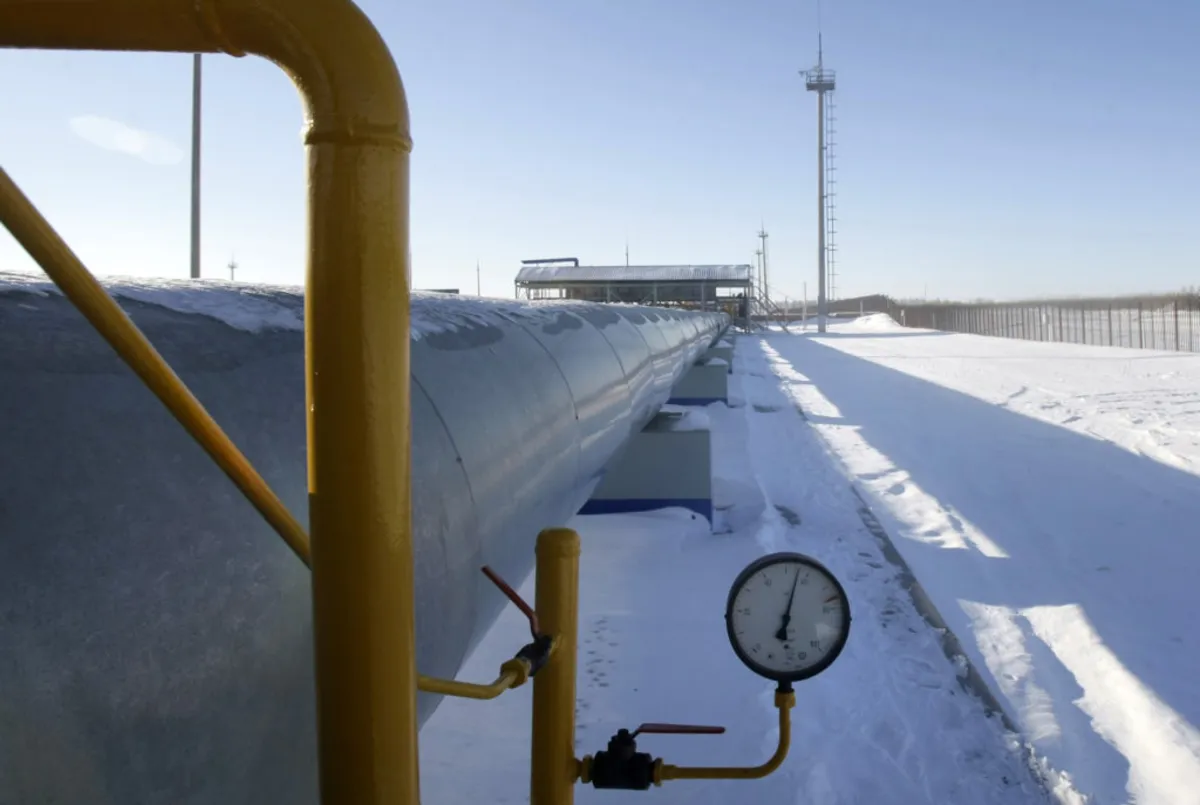
In a significant development in the ongoing conflict between Russia and Ukraine, reports have emerged that Russian special forces infiltrated a gas pipeline to launch attacks on Ukrainian units in the Kursk region. This strategic maneuver was confirmed by both Ukraine’s military and various Russian war bloggers, as Moscow claims new territorial gains in its efforts to recapture parts of the border province that were seized by Kyiv during a surprise offensive.
The situation escalated in August when Ukraine executed a bold cross-border incursion into Kursk, marking the most extensive assault on Russian territory since World War II. Within a matter of days, Ukrainian forces successfully captured around 1,000 square kilometers (approximately 386 square miles) of territory, including the strategically important border town of Sudzha, and took hundreds of Russian soldiers as prisoners of war. This operation was designed to provide Ukraine with leverage in future peace negotiations and compel Russia to reallocate forces from its sustained offensive in eastern Ukraine.
Despite the initial success, months later, Ukrainian troops in the Kursk region are facing significant challenges. They are reportedly fatigued and suffering heavy casualties due to relentless assaults from a force of over 50,000 Russian troops, including reinforcements from North Korea. Open-source battlefield maps indicate that tens of thousands of Ukrainian soldiers are in danger of being encircled.
Recent reports from pro-Kremlin bloggers noted that Russian operatives advanced approximately 15 kilometers (9 miles) inside the pipeline previously used to transport gas to Europe. According to blogger Yuri Podolyaka, some Russian soldiers spent several days within the pipeline before launching attacks on Ukrainian positions near Sudzha. This town, which had a population of around 5,000 prior to the full-scale invasion in February 2022, serves as a critical hub for gas transfer and measurement stations, vital for Russian natural gas exports.
Another war blogger, known by the alias Two Majors, highlighted ongoing fierce battles for Sudzha, stating that Russian forces had managed to infiltrate the town through the gas pipeline. Images shared on Russian Telegram channels purportedly show special forces operatives equipped with gas masks navigating the interior of the pipeline. The Ukrainian General Staff confirmed that Russian “sabotage and assault groups” were attempting to establish a foothold outside Sudzha, but claimed that timely detection allowed Ukrainian forces to respond effectively with rockets and artillery. They reported significant enemy losses in Sudzha.
A third Russian war blogger, identifying as Thirteenth, expressed skepticism about the attacking force's ability to succeed due to a lack of logistical support. In a Telegram post, he outlined the challenges faced by the units operating in the rear, emphasizing the absence of food, water, ammunition, and proper communication equipment. “Two or three groups in the rear without all this — that’s a disaster,” he remarked, shedding light on the vulnerabilities of the Russian forces.
The Russian Defense Ministry announced on Sunday that its troops had captured four villages located north and northwest of Sudzha, with the closest being approximately 12 kilometers (7.5 miles) from the town center. This report followed their previous claim of taking three additional villages near Sudzha. Ukraine has yet to respond to these assertions.
In broader geopolitical discussions, former President Donald Trump expressed doubts about Ukraine’s survival during a Fox News interview, suggesting that without American support, the nation may struggle to endure. He noted, “It may not survive anyway,” highlighting the complexities of international aid and the ongoing conflict.
Meanwhile, French Defense Minister Sébastien Lecornu announced that France would utilize profits from frozen Russian assets to fund an additional 195 million euros (approximately $211 million) in military aid for Ukraine. This aid package includes new 155 mm artillery shells and glide bombs for the Mirage 2000 fighter jets previously supplied to Ukraine.
In a related development, reports surfaced indicating that Ukrainian drones targeted oil infrastructure in both southern and central Russia over the weekend. One drone strike occurred at an oil depot in Cheboksary, located around 1,000 kilometers (620 miles) from the border, with no reported injuries but significant damage requiring reconstruction. Additionally, footage shared on Russian Telegram channels displayed flames near a major oil refinery in Ryazan, further escalating tensions. Local officials claimed to have intercepted several Ukrainian drones near the refinery.
As the situation evolves, the conflict continues to draw international attention, with both sides adapting their strategies in this protracted war.